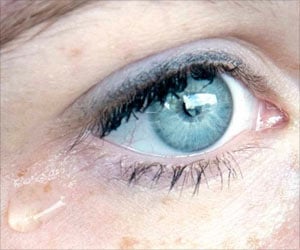A stem cell route to repair prolapsed pelvic floors could be on the anvil, for Australian scientists have found a way of identifying probable stem cells in the lining of a woman's womb.
For women suffering from pelvic floor prolapse help could be at hand. For scientists at the Monash University, Australia, have found a way of identifying probable stem cells in the lining of a woman's womb.
The findings open up the possibility of using these stem cells for tissue engineering applications, such as building up natural tissue to repair prolapsed pelvic floors, which affect over 50 per cent of women after childbirth.Pelvic floor prolapse refers to relaxation of the muscles and ligaments that hold the pelvic organs (uterus, bladder, urethra, vagina, and rectum) in their correct anatomic position.
When prolapse occurs the supporting muscles or ligaments or connective tissue begin to lose their supporting ability, the bladder, uterus, rectum and even small bowel can begin to fall, forming a type of hernia or bulge in the wall of the vagina and/or rectum.
Changing hormone levels after menopause may make the ligaments and muscles of the pelvis weaker and less elastic, making prolapse more common in post-menopausal women.
Weaknesses in the pelvic floor muscles are most often caused by damage done during a vaginal birth. This is more likely if the baby was very large, or if the labour was long and difficult. The muscles of the pelvic floor may also be damaged by, obesity, chronic coughing, chronic constipation or strenuous exercise.
A prolapse can cause pain during intercourse and can also affect the functioning of the organ involved. For example, if the bladder is prolapsed, it can cause urinary incontinence or difficulty emptying your bladder and/or bowel. It may also increase your risk of urinary tract infections.
Advertisement
The Australian research published in the journal Human Reproduction (published online 13 September 2007) has identified two markers that can be used to isolate mesenchymal stem-like cells (MSC) from endometrial tissue (the lining of the womb).
Advertisement
“Colony-forming ability is a property of adult stem cells, as is the ability to differentiate into different cell types," said Dr Gargett.
The study showed that the MSC were located around the blood vessels in the endometrium. Dr Gargett said that this strengthened the case for them being mesenchymal stem cells, which are found around blood vessels in other tissue types.
This is the first time that researchers have been able to use markers to isolate MSC from the endometrium and also the first study to show that the properties of these cells mean they are highly likely to be stem cells.
According to Dr Gargett the study has major implications, including insights into the role of MSC in gynaecological diseases such as endometriosis. Stem cells isolated from endometrial tissue could also be used to make constructs with biological scaffolds for pelvic floor prolapse surgery, said Dr Gargett.
“Pelvic floor prolapse is a common problem that significantly impacts the lives of many women and they find it embarrassing to talk about – it is a hidden disorder in need of an innovative therapy,” she explained.
Clinicians used synthetic mesh and biological scaffolding to reinforce prolapsed pelvic floors, but both had complications, said Dr Gargett.
"We believe that using a combination of biological scaffold and a woman’s own MSC might provide a solution that would ensure a longer lasting firm natural tissue that would be a superior support for the prolapsed uterus," she said.
Source-Medindia
GPL








